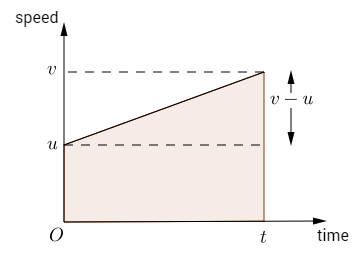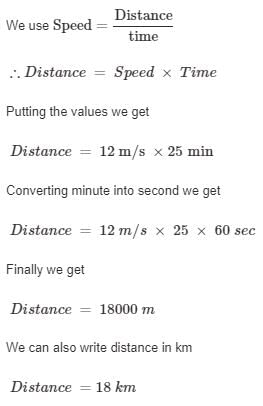All Exams >
Grade 8 >
Science for Grade 8 >
All Questions
All questions of Position and Motion for Grade 8 Exam
______________ describes how fast something is going, whereas, __________ describes how fast something is going in a certain direction.- a)rate, velocity
- b)rate, speed
- c)speed, velocity
- d)speed, acceleration
Correct answer is option 'C'. Can you explain this answer?
______________ describes how fast something is going, whereas, __________ describes how fast something is going in a certain direction.
a)
rate, velocity
b)
rate, speed
c)
speed, velocity
d)
speed, acceleration
|
|
Harshad Basu answered |
Explanation:
Example:
Suppose a car is moving with a speed of 30 km/h, but it is taking a U-turn and moving in the opposite direction. Then, the speed of the car remains the same, i.e., 30 km/h, but its velocity changes because the direction of motion has changed. The velocity of the car will be negative because it is moving in the opposite direction.
Therefore, option (c) is the correct answer as speed measures how fast an object is moving, whereas velocity measures how fast an object is moving in a particular direction.
- Speed: Speed is the measure of how fast an object is moving or the distance covered by an object in a given time interval. It is a scalar quantity and is measured in meters per second (m/s) or kilometers per hour (km/h).
- Velocity: Velocity is the measure of how fast an object is moving in a particular direction. It is a vector quantity and is measured in meters per second (m/s) or kilometers per hour (km/h).
Example:
Suppose a car is moving with a speed of 30 km/h, but it is taking a U-turn and moving in the opposite direction. Then, the speed of the car remains the same, i.e., 30 km/h, but its velocity changes because the direction of motion has changed. The velocity of the car will be negative because it is moving in the opposite direction.
Therefore, option (c) is the correct answer as speed measures how fast an object is moving, whereas velocity measures how fast an object is moving in a particular direction.
Speed of sound in water is 1500 m s-1, depth of water when reflected sound waves are detected after 0.40 s is
- a)700 m
- b)600 km
- c)300 m
- d)750 km
Correct answer is option 'C'. Can you explain this answer?
Speed of sound in water is 1500 m s-1, depth of water when reflected sound waves are detected after 0.40 s is
a)
700 m
b)
600 km
c)
300 m
d)
750 km
|
|
Shilpa nambiar answered |
To determine the depth of water using the speed of sound in water and the time it takes for the reflected sound waves to be detected, we can use the following steps:
- Speed of sound in water: 1500 m/s
- Time for the round trip: 0.40 s
The sound wave travels to the bottom of the water body and back to the surface, so the time taken for the sound to reach the bottom is half of the total time:
Time to reach the bottom=0.40/2=0.20 s
- Depth of the water can be calculated using the formula:
Distance=Speed×Time
Here, the distance to the bottom (which is the depth d) is:
d=1500 m/s×0.20 s=300 m
Thus, the depth of the water is 300 meters.
How far will a car travel in 25 min at 12 m/s?- a)24 km
- b)10 km
- c)18 km
- d)14 km
Correct answer is 'C'. Can you explain this answer?
How far will a car travel in 25 min at 12 m/s?
a)
24 km
b)
10 km
c)
18 km
d)
14 km
|
|
Ravi Verma answered |
Speed = Distance / TimeDistance = Speed x Time= 12 m/s x 25 min= 12 m/s x 25 x 60 sec= 18000 m=18 km
______ is a unit of speed:- a)m/s
- b)hr
- c)s
- d)kg
Correct answer is 'A'. Can you explain this answer?
______ is a unit of speed:
a)
m/s
b)
hr
c)
s
d)
kg

|
Amrita Sengupta answered |
Speed = distance /time unit of distance is m unit of time is S hence, unit of speed = m/s
Chapter doubts & questions for Position and Motion - Science for Grade 8 2025 is part of Grade 8 exam preparation. The chapters have been prepared according to the Grade 8 exam syllabus. The Chapter doubts & questions, notes, tests & MCQs are made for Grade 8 2025 Exam. Find important definitions, questions, notes, meanings, examples, exercises, MCQs and online tests here.
Chapter doubts & questions of Position and Motion - Science for Grade 8 in English & Hindi are available as part of Grade 8 exam.
Download more important topics, notes, lectures and mock test series for Grade 8 Exam by signing up for free.
Science for Grade 8
76 videos|170 docs|65 tests
|



























